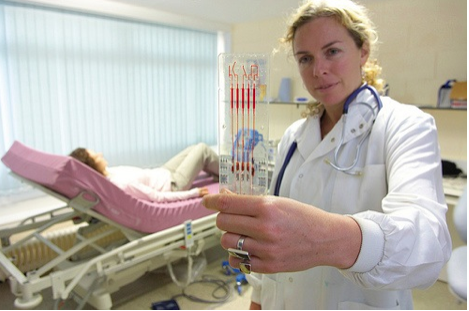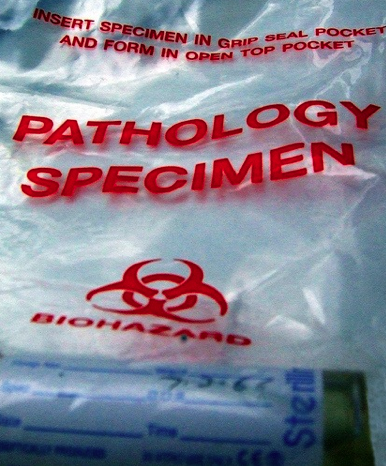This website uses cookies so that we can provide you with the best user experience possible. Cookie information is stored in your browser and performs functions such as recognising you when you return to our website and helping our team to understand which sections of the website you find most interesting and useful.
Chlamydia Tests – What are Available?
[social_share/]
In order to determine whether or not a person has the Chlamydia infection, it is advisable to get a Chlamydia test. These are available in a number of different forms and can be accessed in different ways depending on the individual’s preferences and access to services.
Your healthcare provider such as a nurse, doctor or pharmacist may be able to assist you with getting the right kind of test, but there are also ways in which you can seek testing without ever needing to step over the threshold of a clinic or surgery.
For information on what is available in terms of testing, read on and get all the information you need to help you make your decision.

New tests for Chlamydia are being developed all the time
Getting tested
If you are sexually active, it is important that you are screened for sexually transmitted infections. The usual advice is that you should get a check-up, including testing for STIs, around once a year or any time you change partner.

Get tested every time you change partner
Testing can be done as part of an overall sexual health check that also includes checking other aspects of your health and wellbeing and gives you the opportunity to get tips on safer sex and stock up on contraception and barrier protection where necessary.
You can get a full range of STI screening at your local Sexual Health clinic, which will offer confidential appointments or even a walk-in service so you can be seen anonymously.
How quickly can you get tested?
If you suspect that your partner has Chlamydia, you need to ensure that you’re tested without delay. The Chlamydia infection often does not produce any outward symptoms (3 Chlamydia symptoms) for some time after it is contracted – sometimes not at all – but that doesn’t mean that the infection isn’t doing damage that may be irreversible.
The most common and widely available test is the urine test, which can be used for both men and women. Often this test is available over the counter at a pharmacy or even for order online. However, it does make sense to consult with a healthcare professional if you think that you have been exposed to the infection as it will not always show up in a urine test. The sensitivity of the tests also varies, so consulting a health professional will help you to make the right choice.
You can be tested straight away, although it may be recommended that you repeat the test if it has been two weeks since you had sex with a partner you suspect may have the infection. It is also advisable to ensure that either you or your partner has confirmed the presence of Chlamydia before starting antibiotic treatment. Resistance to antibiotics can be a problem in the treatment of bacterial infections, so it’s important to make sure you know what you’re treating an infection rather than taking antibiotics without cause.
Types of testing
The types of tests that are on offer vary slightly depending on whether you are biologically male or female. Tests can be either via a swab or done following the collection of a urine sample.

Urine samples are the most common type of Chlamydia test
Tests don’t necessarily always have to involve the genitals. Depending on the type of sex that you’ve had with your partner, testing could involve collecting samples from the anus or mouth (11 Chlamydia from oral) to check for the Chlamydia infection.
Tests for women
Testing in a clinic setting such as a doctor’s surgery or sexual health clinic may involve the taking of swabbed samples from different parts of the body. Swabs from the vagina or cervix can be taken at the same time as cervical smear, but must be requested separately as the cells taken for a smear test are analysed differently to those collected for a Chlamydia test.
Depending on the type of sex you have had with your partner, you may be offered a swab of the anal area or the back of your throat to detect any Chlamydia that may have been passed on through these routes of infection. Chlamydia doesn’t just affect the genitals, and anal or oral sex may leave you at risk of the infection.
Less commonly, you may be asked for a swab from your eyes if you’re showing the signs of Chlamydial conjunctivitis, the eye infection associated with Chlamydia.
Testing for men
Chlamydia tests for men usually involve taking a swab from the urethral opening at the tip of the penis, where urine and semen come out. As men have the same opening in the body for both semen and urine, urine tests for the infection tend to be slightly more likely to pick up on the infection.
As with women, men do not only have sex using their genitals. If you have performed oral sex on a male or female partner or had anal sex with a male partner or used anal sex toys that have not been disinfected or covered with a fresh condom before use, there is a chance that you may have a Chlamydia infection that can be detected in the rectum or throat. A swab from these areas can also confirm if the infection has been passed on in these ways.
Results
Once a swab or urine sample is taken and sent away to the laboratory, it can take seven to ten days for the result to be returned to the clinic or practice where you took the test. Laboratory testing tends to be the most accurate way of diagnosing Chlamydia and the time taken to wait for the results should not have an impact on the effectiveness of the treatment
Urine tests bought over the counter or online (12 Chlamydia treatments online) usually show a result in around half an hour. However, it is important to ensure that the test you choose is reliable.
Conclusion
There is a wide range of testing options available for Chlamydia (Hub page). Which test to take will depend on the individual and their medical and sexual history, so taking advice from a healthcare professional will help you to choose the right type of test to give you an accurate result.
Image Credits: Montage Communications, Paul Hagius and Paul Walker



